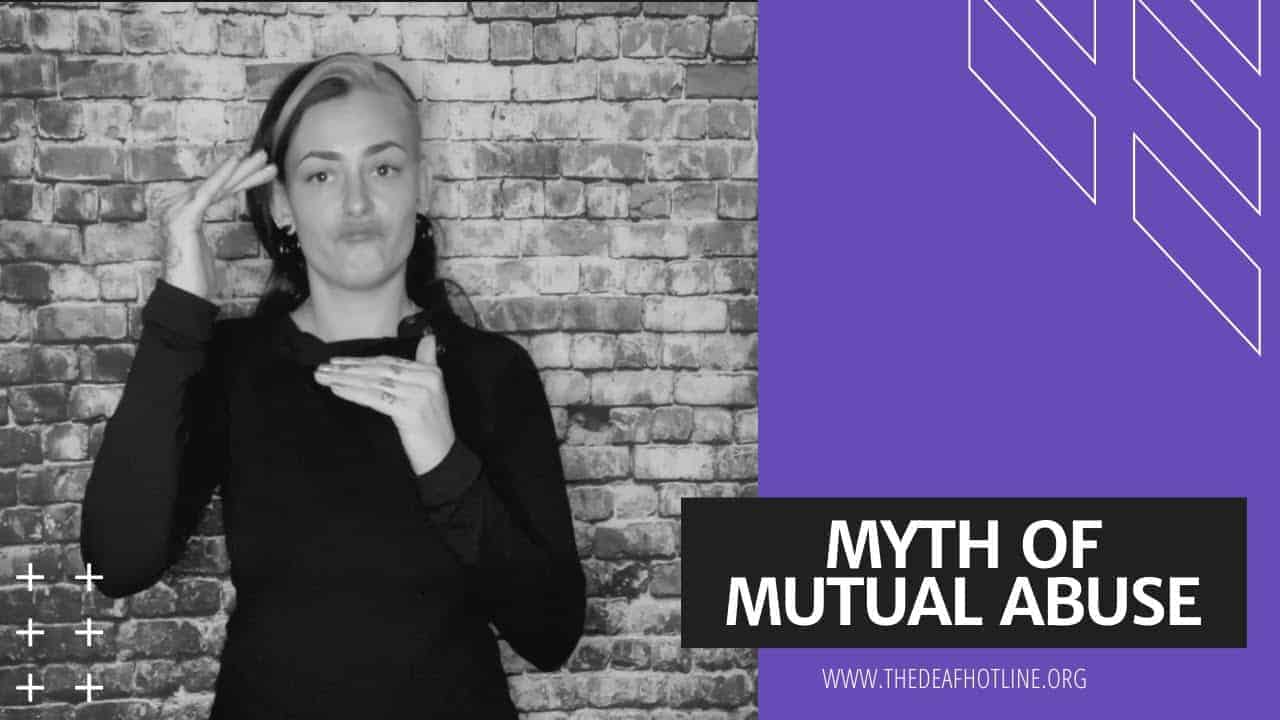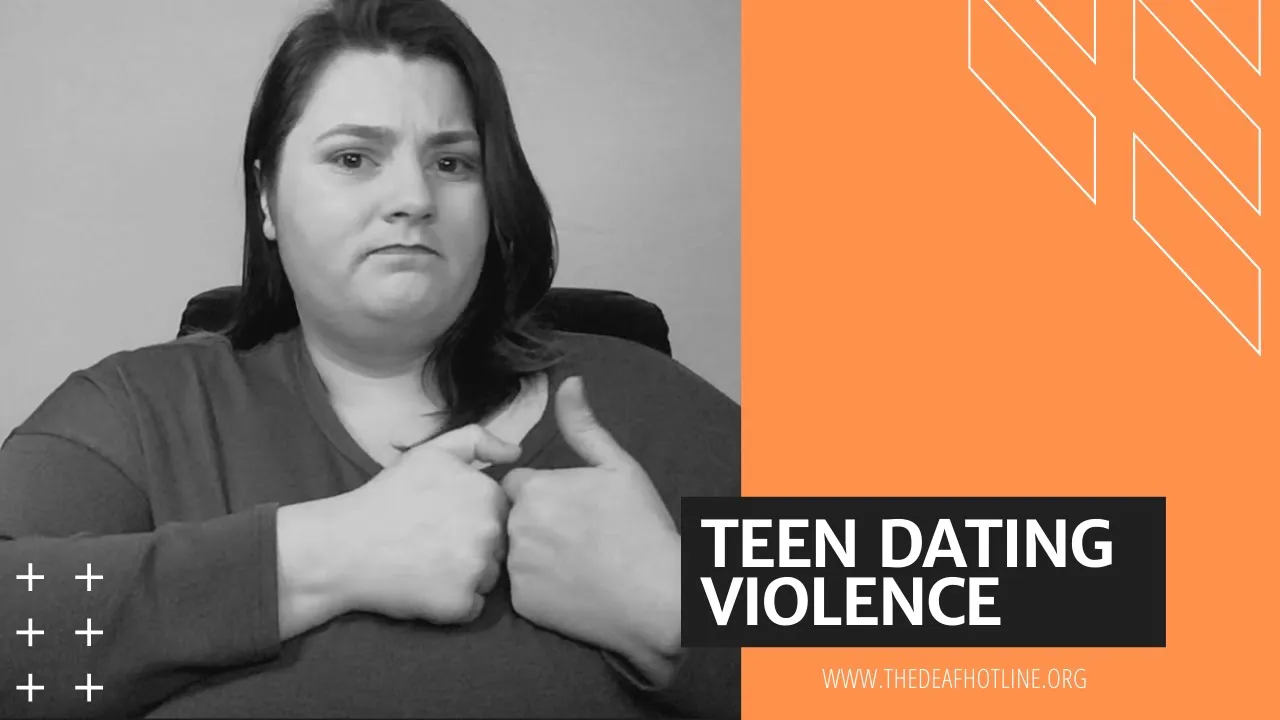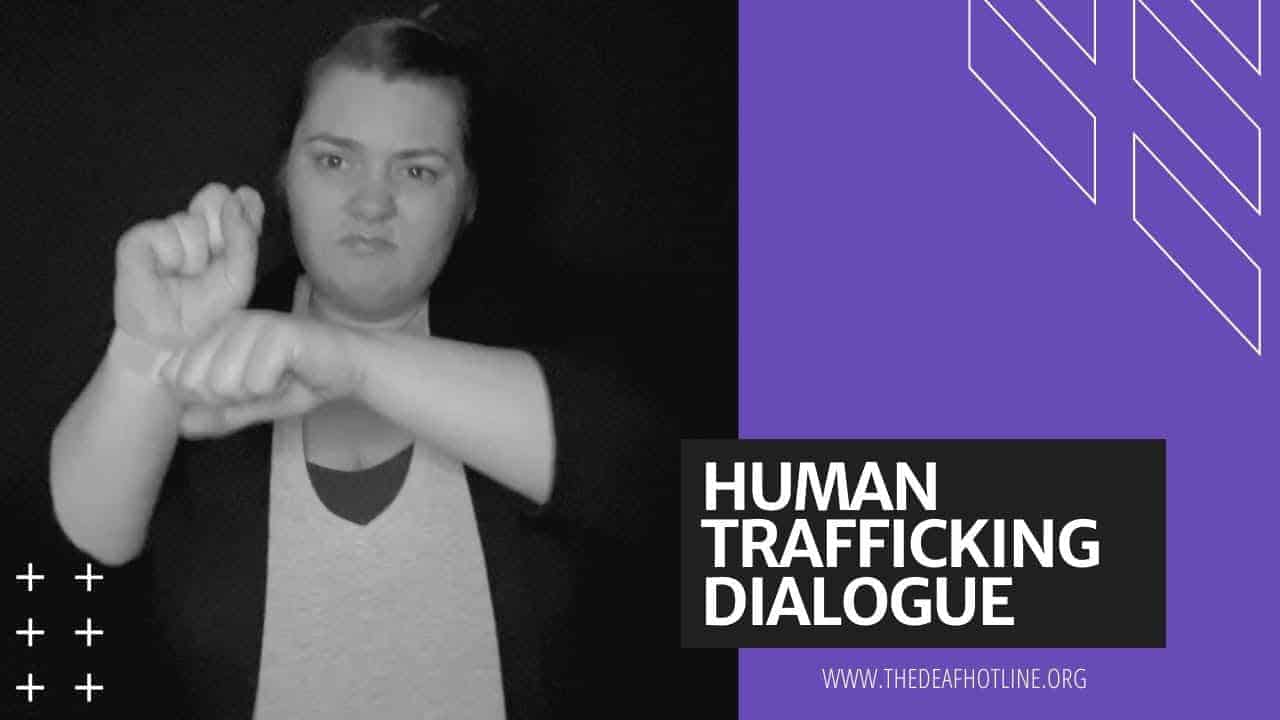You are not alone. You are never to blame for the abusive actions of others. While responsibility for ending abusive behavior is your partner’s and theirs alone, there are several steps you can take to protect yourself on your path to long-term safety. Remember that you always have options: our advocates are available 24/7 by phone or chat to discuss your situation and help create a personalized safety plan that’s right for you. Below are some tips on internet safety, safety planning with children, and safety planning with pets.
Legal Protections
For some survivors, the criminal legal system may offer options for protection from abusive partners. The Deaf Hotline doesn’t give legal advice — nor are we legal advocates — but there may be legal resources available in your community that we can help you identify.
A protective order is a legal document intended to prohibit your partner from physically coming near you or harming or harassing you, your children, or other loved ones. You can apply for a protective order at courthouses. Protective orders may be able to put a stop to physical abuse, but they depend on your partner’s adherence to the law and law enforcement’s willingness to enforce the protective order. Psychological abuse is still possible, and a protective order should never replace a safety plan.
Internet Safety
Technology and the internet are powerful tools for anyone experiencing domestic violence. They can be essential resources to access help and information, and valuable platforms to connect with friends, family members, advocates, and service providers. Unfortunately, they can also be used by abusive partners to begin, continue, or escalate abuse, making it all the more important to ensure your safety online.
Another way to stay safe is to remember to delete our number from your phone and clear your internet browser history after visiting our website.
Computers store information about the websites you visit. That means bills you pay and purchases you make are tracked, and messages or emails can be retrieved. You should always consider that a computer might be monitored when you use it and be careful with what you send others or post.
Safe computers can be found at your local library, Internet cafe, shelter, workplace, or computer technology center; avoid using shared computers when researching things like travel plans, housing options, legal issues, and safety plans. Using safe browsing practices (like using a VPN) can help prevent abusive partners from tracking your internet history.
Email Safety
Email can be a useful way to keep in touch with trusted friends and family members who may be aware of your situation. An abusive partner is likely to know this and may have access to your email account without your knowledge. One possible option is to open an account your partner doesn’t know about on a safe computer and use that email for safety planning and sensitive communications. Use several different methods of communication when contacting people so that you’ll know if they tried to reach you elsewhere, and keep your monitored account active with non-critical emails in order to maintain appearances. Encrypted email services may offer more security.
Cell Phone Safety
As technology has evolved, cell phones have become increasingly embedded in our daily lives. This provides quick access to resources and information, but it can also give other people instant updates on your whereabouts, habits, and activities. Cell phones can be used to track your location and retrieve call and text history.
Social Media Safety
Posts on social media are never truly private, no matter your settings; once it’s online, it’s no longer under your control.
- Be protective of your personal information, and remember that phone numbers, addresses, handles, and personal details (like birth date, schools you attended, employers, and photos with landmarks) may make it easier for someone to reach you.
- Set boundaries and limits, and ask people not to post personal information, photos, or check-ins you aren’t comfortable with.
- Check your social media settings to make sure your privacy settings are strict, and disable the ability for other people to tag you in their photos or posts.
- Similarly, don’t post information about people without their consent as you could jeopardize their safety or the safety of others.
DOCUMENT WHAT IS HAPPENING TO YOU
- Your computer and cell phone use can be monitored without you knowing it.
- Your history can never be completely erased from a computer or device, even if you browse in “private” or “incognito” mode.
- Email can be intercepted like physical mail.
- Global Positioning System (GPS) trackers can be placed in your car or on items like your purse or cell phone.
- Some court systems publish their records online, which could contain compromising personal information like names or addresses.
SAFETY PLANNING WITH CHILDREN
If you have children, identify ways to keep them safe when violence occurs — before it happens.
That includes at home, when you’re out and about in public, and if your children spend any unsupervised time with your abusive partner. An effective safety plan includes personalized planning to keep your children safe at home and during any unsupervised time they may spend with your partner. That includes talking to your children about age-appropriate ways to protect themselves when violence occurs, as well as details and items to remember while preparing to leave an abusive situation and after.
Children who experience abusive situations are forced to process complex emotions, often without access to the resources they need to do so. Planning for your children’s physical and emotional health is essential for their short-term and long-term wellbeing, no matter how old they are.
CHILDREN AND DOMESTIC VIOLENCE
- Remind them that their first responsibility is their own safety even if they want to protect you or someone else in a moment of crisis. Teach them that you want everyone to be safe and that the preparations you’re making are to ensure their safety and everyone else’s during an emergency.
- Your partner may try to use your children to harm you by also abusing them, or by threatening, harassing, or manipulating you or your children depending on the situation. Examples include preventing you from seeing your children, calling or threatening to call police or immigration enforcement to gain custody of your children, humiliating you in front of them, using your children to monitor your behavior, or lying to your children to turn them against you.
- Never blame your children for their responses to your partner’s abusive behavior especially if they intentionally or unintentionally reveal your plan to leave. Make sure they know the violence isn’t their fault and that abuse is never okay, even when it comes from someone they love.
- It’s important that your children have access to people other than yourself who they feel comfortable talking with and expressing themselves to. Help them identify these people in their life and make sure they can contact them when needed. If possible, enroll them in a culturally relevant counseling program or therapy specializing in child counseling. Many domestic violence shelters offer children’s counseling. Contact a Hotline advocate today to find out what local resources are near you.
- Above all else, remind your children that you’re there for them and that you love them unconditionally.
SAFETY PLANNING WITH PETS
Keeping Your Pets Safe
Looking for a safe haven for you and your pet? Check the Safe Havens Mapping Project to find safe havens for your pets. If there’s no listing for your area, call a local animal shelter and ask about temporary assistance for pets in domestic violence situations. There are many reasons why beloved animals may become homeless: overpopulation due to lack of spaying and neutering, pet owners who decide they no longer wish to keep their pets, pets that run away from home, or pets who are abused by their owners. However, many pets are also displaced as a result of domestic violence.
According to Safe Place for Pets, up to 65% of domestic violence victims are unable to escape their abusive partners because they are concerned about what will happen to their pets when they leave. In many cases, victims of domestic violence may try to take their pets with them when they are able to leave the relationship but find that their local domestic violence shelters do not accept pets. Fortunately, this is changing, and shelters for domestic violence and abuse victims are beginning to create spaces for pets.
Thanks to the Animal Welfare Institute’s Safe Havens Mapping Project, it’s becoming easier to locate shelters that accept pets. If you are in an abusive relationship and have pets in your home, it can be a good idea to make your pets part of your safety plan.
SUGGESTIONS FOR PET SAFETY PLANNING:
- If possible, don’t leave pets alone with an abusive partner.
- If you’re thinking about getting a protective order, consider that some states allow pets to be a part of these.
- Talk to friends, family or your veterinarian about temporary care for your pet.
- If that is not an option, search by state or zip code for services that assist domestic violence survivors with safekeeping for their pets. Try zip code first, and if there are no results, try a search by state.
- If none of the results are feasible for your situation, try contacting your local domestic violence agency or animal shelter directly.
For help finding an animal shelter, visit the Humane Society website. Take steps to prove ownership of your pet: have them vaccinated and license them with your town, ensuring that these registrations are made in your name (you can change them if they aren’t). Pack a bag for your pet that includes:
- Food
- Medicine
- Documents of ownership (receipts from adoption or purchase of pet, license to establish ownership, or receipts for animal purchases)
- Health documents (veterinary or vaccination records)
- Leash or carrier ID and rabies tag if a dog or cat (these will also help establish ownership)
- Toys
- Bedding
If you must leave without your pet, remember to leave enough food, fresh bedding, litter, etc. for your pet. If you’ve had to leave your pet behind with your abusive partner, try to ask for assistance from law enforcement officials or animal control to see if they can intervene.
If you are able to leave with your pet:
- Keep pets indoors (if possible)
- Avoid leaving the pet outside alone
- Pick a safe route and time to walk your pet
- Try to exercise or walk your pet with someone you trust
- Maybe change your veterinarian
Remember, your situation is unique, and these tips may not work for everyone. You can always call or chat with an advocate at The Deaf Hotline for more information. We can help you brainstorm ways to keep yourself and your pets safe!



